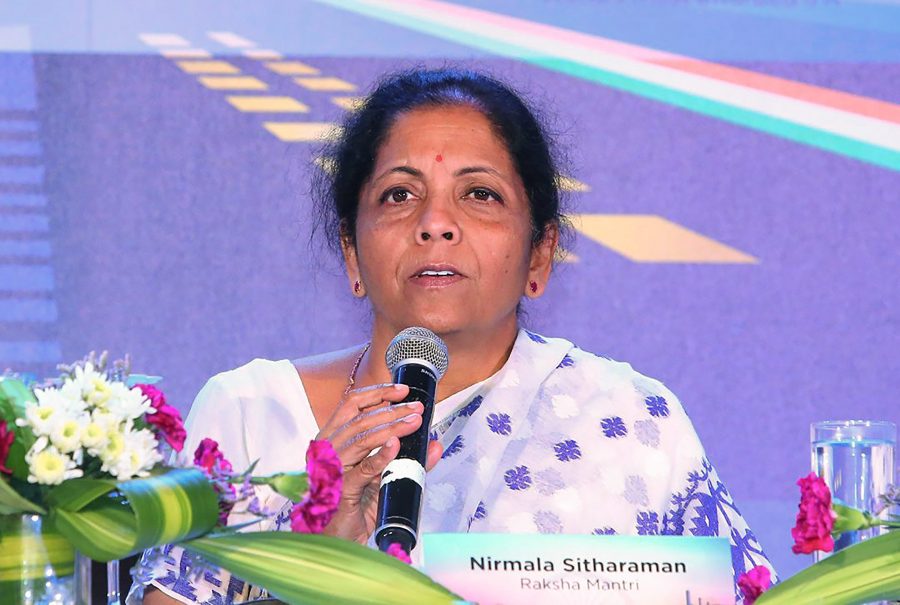
Govt in a spot over fiscal deficit target after corporate tax rate cut
How the government plans to stick to the fiscal deficit target of 3.3% of GDP this year is an abiding mystery, as it has dug for itself a hole of almost ₹2.35 lakh crore in earnings till now. The mystery has only deepened since finance minster Nirmala Sitharaman said on Sunday – a day after announcing sharp cuts in the corporate tax rate.

How the government plans to stick to the fiscal deficit target of 3.3% of GDP this year is an abiding mystery, as it has dug for itself a hole of almost ₹2.35 lakh crore in earnings till now. The mystery has only deepened since finance minster Nirmala Sitharaman said on Sunday – a day after announcing sharp cuts in the corporate tax rate – that the government plans no cuts in its public expenditure and that compliance will make good any lost revenue. She has also reiterated that the fiscal deficit target is still achievable and that government capex will be front loaded.
Also read: GST demands ignored, but will corporate tax cut push consumption?
The latest worries over India’s fiscal health emerged after Sitharaman announced the largest ever cut in corporate tax rates on Friday during market hours. The headline corporate tax rate was brought down from 30% to 22% with effective tax rate settling at 25.2% from 34.9% earlier.
The government also announced a special 17% rate for new companies incorporated on or after October 1, 2019 and starting new manufacturing facilities before March 2023. Other concessions announced include reduction in the minimum alternate tax rate from 18.5% to 15%, removal of the additional surcharge on capital gains for all classes of investors and exemption for some listed companies who had announced buyback programmes.
Also read: FM’s measures to ‘pump prime’ economy will cost revenue collection target
Investors and India Inc welcomed these unprecedented moves with loud cheers as this will mean more money in the hands of Indian companies. There is already much talk of these cuts spurring more investments, increased foreign direct investment and the prospect of at least some companies slashing product prices to pass on some of the relief to consumers.
Also read: Too early and little data to indicate economic revival yet
Analysts at Kotak Institutional Equities pointed out that besides retaining the additional surplus due to tax rate cuts, companies can opt for the following
- Investing in enhancing capacity
- Passing on cuts to customers
- Using the money to deleverage
- Distributing it through buy-backs or dividends.
With current capacity utilisation of manufacturing companies at around 75% and persistent weak demand conditions, investments may not be undertaken in the near term (though new entrants/exporters will be incentivised due to lower rate). Unless a majority of the surplus is passed on to the customers, consumption demand is unlikely to see much impetus in the near term. We maintain our FY2020E GDP growth at 5.8% while any pick up could be seen in the latter part of FY2020.
Also read: India needs structural reforms to fire up economy, say experts
Meanwhile, as the FM herself noted, her corporate tax cut proposals will lead to an impact of ₹1.45 lakh crore in government earnings this fiscal. This latest earnings dampener comes after an already sluggish growth in direct taxes, which have averaged a 5% increase till mid-September against an over 17% year-on-year growth rate envisaged in the Budget. Ditto for GST collections, which have already fallen below the benchmark ₹1 lakh crore mark in two months out of five this fiscal.
Analysts are now predicting that there would be an ₹90,000 crore shortfall in tax revenues this fiscal, since expected buoyancy in GST collections and total direct taxes has been missing, taking the total gap between target and actual government revenue to ₹2.35 lakh crore.
Also read: Ground reports of a downturn
SBI Caps said in a note that this would mean the fiscal deficit number moves up to 3.75% of GDP by the end of the year. This, after taking into account incremental revenues from the RBI, savings from PM-KISAN and also a ₹50,000 crore expenditure cut by the government. The SBI analysts have said in a note that “We believe the government will resort to an expenditure rationalisation of an amount of ₹50,000 crore. Economic surplus and RBI surplus, after taking into account the dividend announced, comes to around ₹58,500 crore. Furthermore, ₹35,000 crore will be saved from PM-KISAN and others. There is a possibility of extra dividend of ₹10,000 crore from PSEs due to increase in their profits. Thus the net impact on fiscal deficit is around ₹82,000 crore or 0.4% of GDP.”
Analysts at brokerage Prabhudas Liladhar said the fiscal deficit could rise to 3.7% straight away due to the corporate tax rate cut but even this number may be breached due to a sluggish economy. “Finance minister’s move to slash corporate tax and other reliefs will cause shortfall of ₹1.45 trillion (₹1.45 lakh crore) in total revenue at 7% of total revenue receipt from budgeted estimate. Fiscal deficit as a percentage of GDP which was targeted at 3.3% will increase to 4%.
However, balancing out 0.58 trillion (after deducting ₹0.9 trillion from ₹1.48 trillion) received from Reserve Bank of India will bring fiscal deficit at 3.7% which is 40bps above government target. However even this number could be difficult to achieve as 1HFY20 could be muted due to slowdown in the economy”.
Ratings agency CARE Ratings said in a note that fiscal deficit could rise by as much as ₹1 lakh crore and touch 3.8% of GDP.
Not just fiscal concerns, the hefty reduction in corporate tax rates has also brought out the angst of the salaried middle class, which feels left out since now individual tax payers will be taxed at a much higher rate than large companies in some cases. The FM has said she has not applied her mind to offering any concessions to the honest Indian tax payer though a report on the Direct Tax Code had recommended concessions in both, corporate and individual income tax rates.
Perhaps the precarious fiscal situation is weighing on Sitharaman’s mind too and she may like to wait for some more time before considering any such proposal for individual tax payers? One can only hope she would see merit in being kind to the aam aadmi (common people) too, since fiscal considerations do not seem to have bothered her after offering hefty corporate tax rate cuts.





